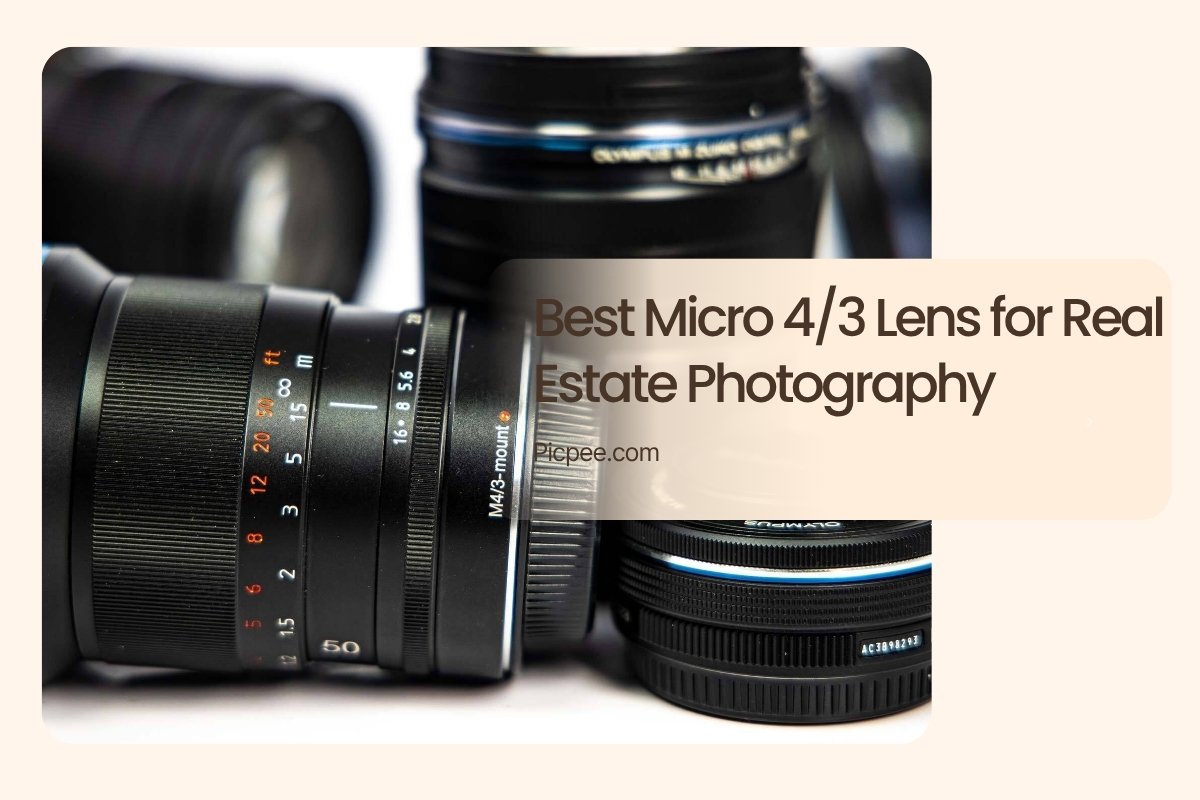Real estate photography is about more than just documenting spaces—it’s about presenting properties in a way that captures their full potential. For professionals who prioritize portability and precision, Micro Four Thirds (MFT) lenses have become a game-changer. With their compact design and outstanding optical quality, these lenses deliver sharp, vibrant, and distortion-free images that perfectly represent any space.
In this comprehensive guide, we’ll explore why MFT lenses are ideal for real estate photography, what key features to look for, and which models perform best for interiors, exteriors, and even twilight scenes.
Top Micro 4/3 Lenses for Real Estate Photography
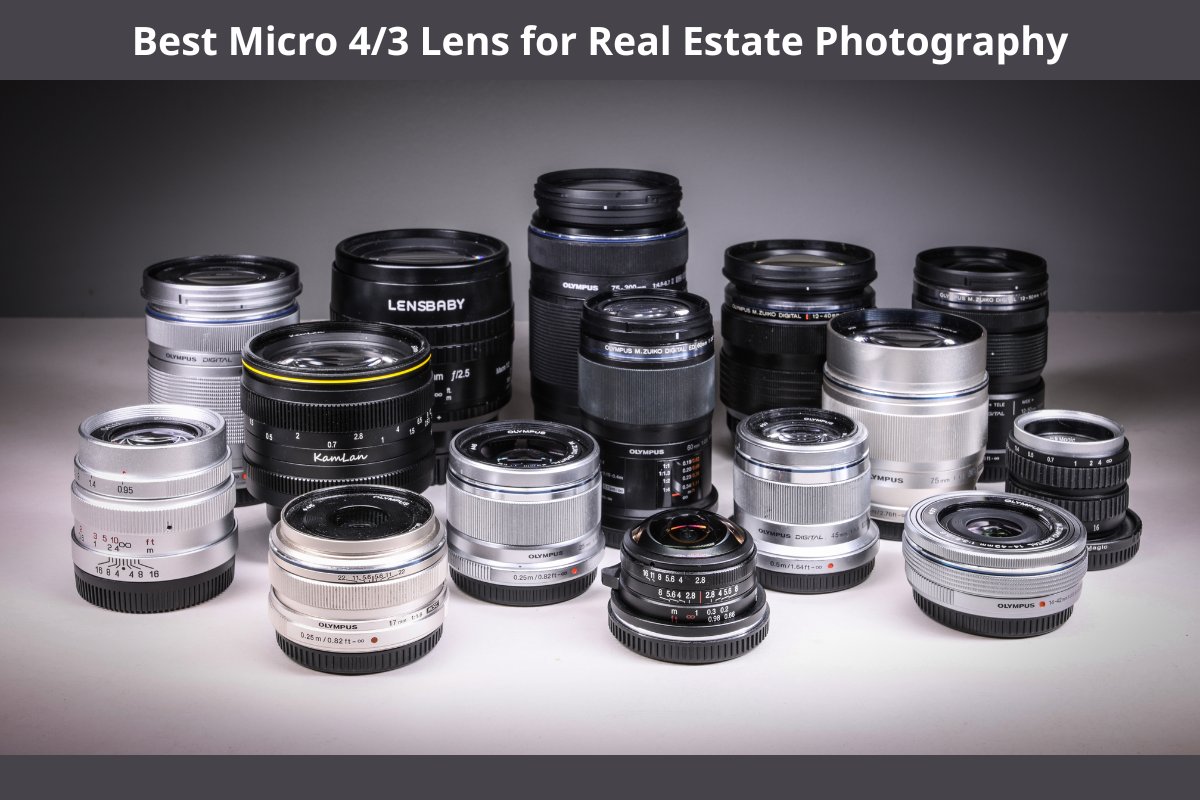
When choosing lenses for property photography, you want a mix of wide coverage, sharp rendering, and minimal distortion. Here are the top performers professionals rely on:
Olympus M.Zuiko Digital ED 7–14mm f/2.8 PRO
This ultra-wide lens is a favorite among real estate photographers for its exceptional clarity and edge-to-edge sharpness.
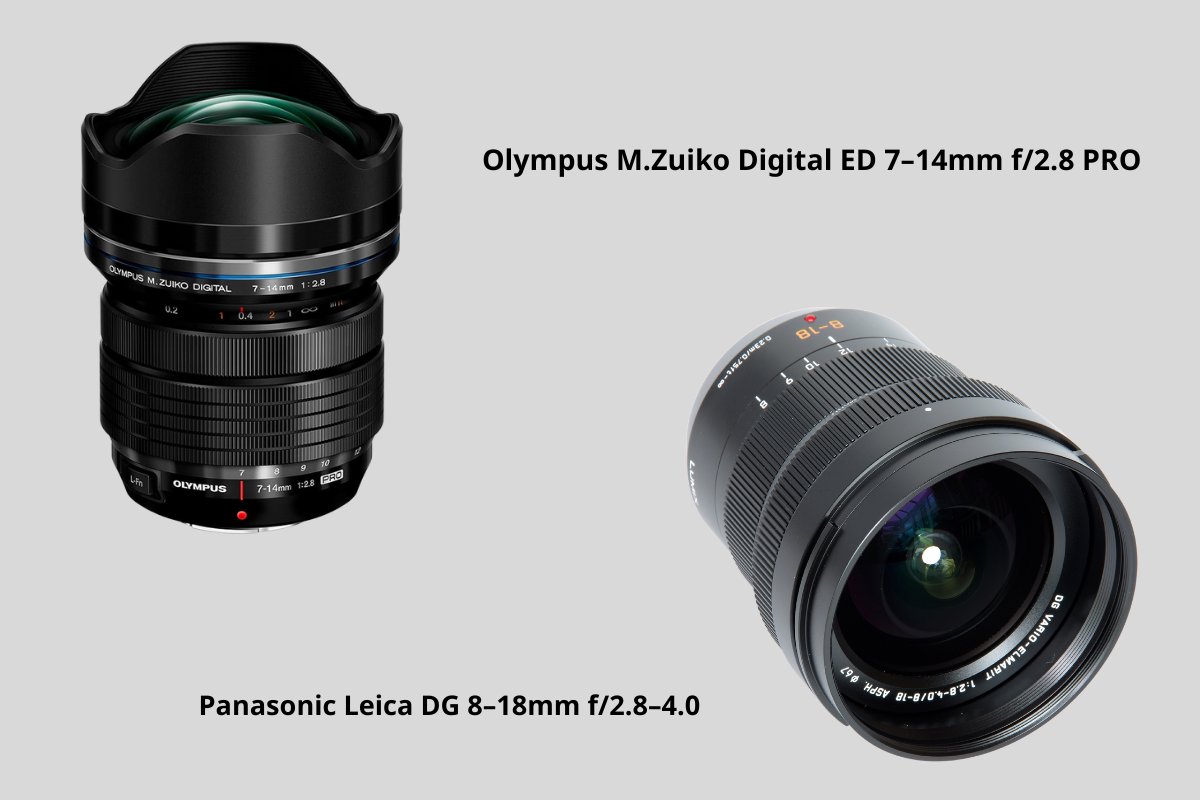
- Key Features:
- Constant f/2.8 aperture for bright, consistent exposure
- Weather-sealed design
- Virtually distortion-free architecture
- Excellent for tight interior spaces
Why It’s Great:
Its 7–14mm focal length (equivalent to 14–28mm full-frame) gives you the ability to showcase entire rooms in one shot, preserving natural proportions and making interiors look spacious yet realistic.
Panasonic Leica DG 8–18mm f/2.8–4.0
A premium collaboration between Panasonic and Leica, this lens delivers crisp color rendition and professional-grade optics.
- Key Features:
- Wide coverage ideal for both indoor and outdoor shots
- Fast aperture for low-light performance
- Minimal chromatic aberration
- Excellent color accuracy
Why It’s Great:
This lens handles strong light contrasts exceptionally well—ideal for shooting interiors with bright windows or mixed lighting conditions.
Olympus M.Zuiko 12mm f/2.0
A compact prime lens that’s perfect for handheld shooting, vlogging property tours, or quick walkthroughs.

- Key Features:
- Bright f/2.0 aperture for clean, natural indoor light
- Compact and discreet build
- Great for detail and lifestyle shots
Why It’s Great:
With its fast aperture and superb sharpness, it’s ideal for twilight exteriors and naturally lit interiors, adding warmth and realism to your property photos.
Panasonic Lumix G Vario 7–14mm f/4.0 ASPH
Another ultra-wide performer, this lens offers flexibility at an affordable price.
- Key Features:
- Constant f/4.0 aperture
- Lightweight construction
- Sharp across the frame
Why It’s Great:
This lens is a cost-effective alternative to pro-level options but still delivers impressive results for interiors and wide-angle exteriors.
Why Choose Micro Four Thirds Lenses for Real Estate Photography
Micro Four Thirds systems offer a balance of image quality, portability, and versatility that’s ideal for real estate photographers who shoot multiple properties or travel frequently.
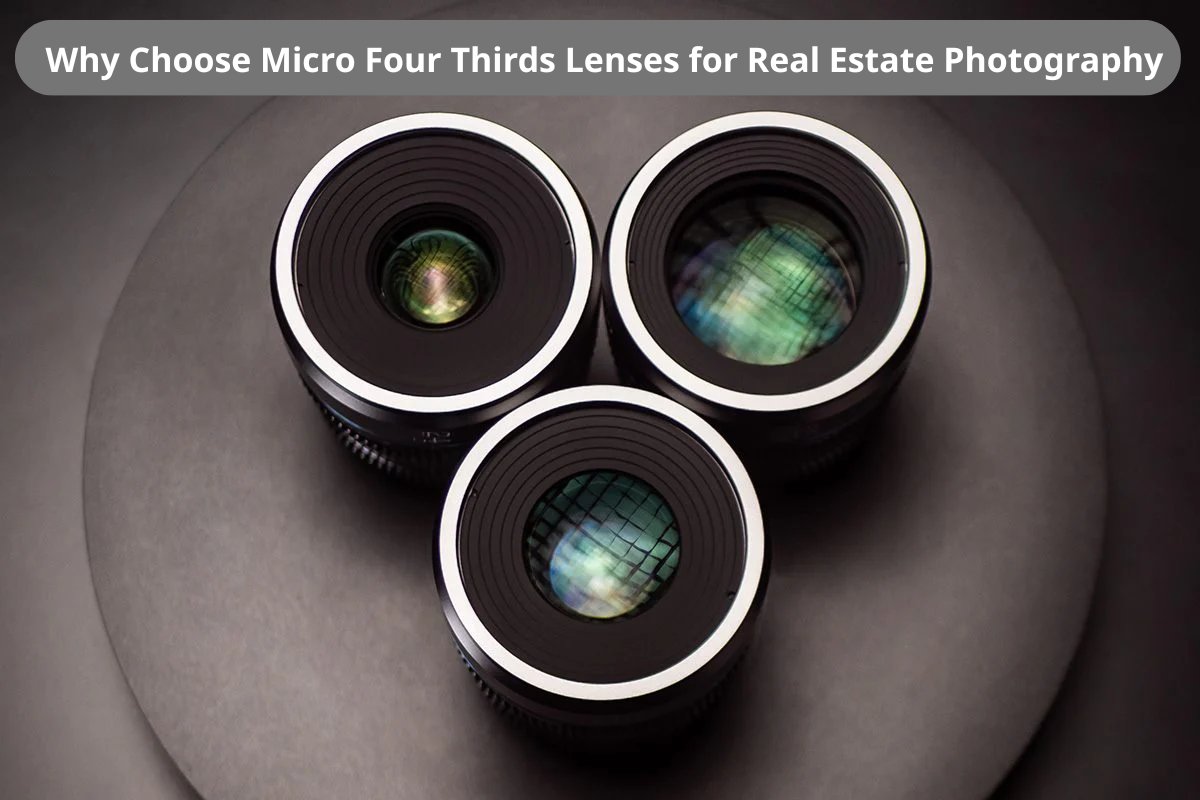
Key Benefits
-
Lightweight and Portable: MFT cameras and lenses are significantly smaller than full-frame systems. You can move through rooms easily, shoot from various angles, and carry less gear during long sessions.
-
Extended Depth of Field: The smaller sensor naturally increases the depth of field, helping more of your scene remain sharp—perfect for interiors where clarity across the frame matters.
-
Affordable but Professional: MFT gear costs less than full-frame systems but still delivers exceptional image quality, color accuracy, and detail, even when enlarged for marketing brochures.
-
Superb Image Stabilization: MFT bodies from Olympus and Panasonic feature powerful in-body stabilization, letting you shoot handheld in low light—ideal for dim rooms or twilight exteriors.
-
Versatile Lens Range: The MFT ecosystem offers everything from ultra-wide zooms to fast primes, making it easy to adapt to different property types and lighting conditions.
What to Look for in a Micro 4/3 Real Estate Lens
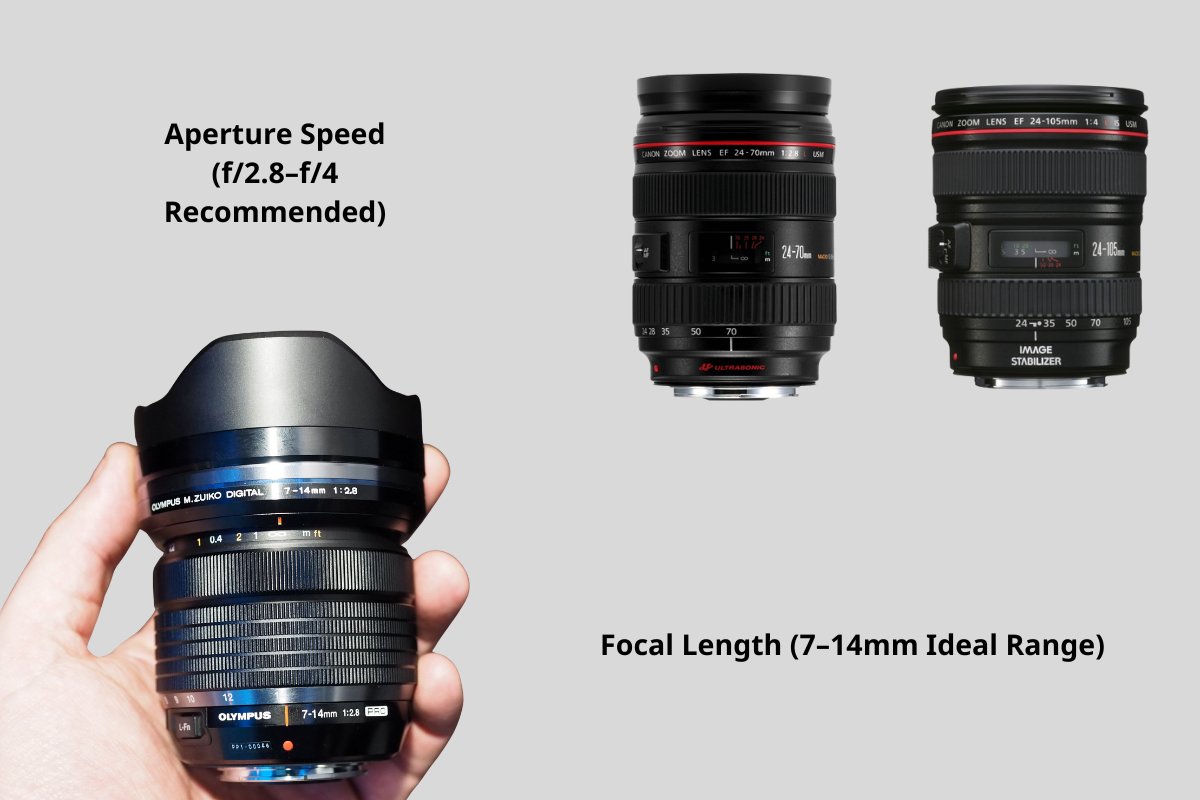
Choosing the right lens for real estate photography is not only about brand preference—it’s about optical precision, lighting capability, and distortion control. A well-selected Micro Four Thirds (MFT) lens can make even compact rooms appear spacious, bright, and inviting while keeping architectural lines perfectly straight. Below are the key factors every professional should consider before purchasing.
Focal Length (7–14mm Ideal Range)
The focal length determines how much of a room you can capture in one shot.
- Wide coverage for interiors: A 7–14mm (equivalent to 14–28mm full-frame) lens is perfect for tight spaces like apartments or bathrooms.
- Balanced perspective: Too wide can cause distortion; lenses in this range keep rooms looking natural while still expanding the visual space.
- Flexible framing: This focal range allows smooth transitions between wide interiors and exterior front shots without switching lenses.
Aperture Speed (f/2.8–f/4 Recommended)
A fast aperture lens performs better in dimly lit rooms and during twilight shoots.
- Low-light advantage: f/2.8 or f/4 apertures let in more light, reducing the need for artificial lighting.
- Cleaner images: Wider apertures help avoid noise, producing bright, sharp details even at higher ISO.
- Creative flexibility: You can achieve soft background separation for lifestyle or staging shots while maintaining overall clarity.
Sharpness and Distortion Control

Real estate images must represent properties faithfully—no curved walls or warped ceilings.
- Edge-to-edge sharpness: Look for lenses with high resolving power that maintain detail from center to corners.
- Minimal barrel distortion: Wide-angle lenses can bend lines; premium optics like Olympus PRO or Leica DG correct this effectively.
- Optical coatings: Anti-reflective coatings help prevent ghosting or flare from windows and reflective surfaces.
Build Quality and Durability
Your lens should withstand frequent use, travel, and changing environments.
- Weather sealing: Protects against dust and moisture during outdoor or coastal shoots.
- Metal housing: Adds longevity and professional stability compared to plastic builds.
- Smooth manual focus: Helpful when fine-tuning sharpness for HDR compositions or vertical shots.
Compatibility with IBIS and Autofocus Systems
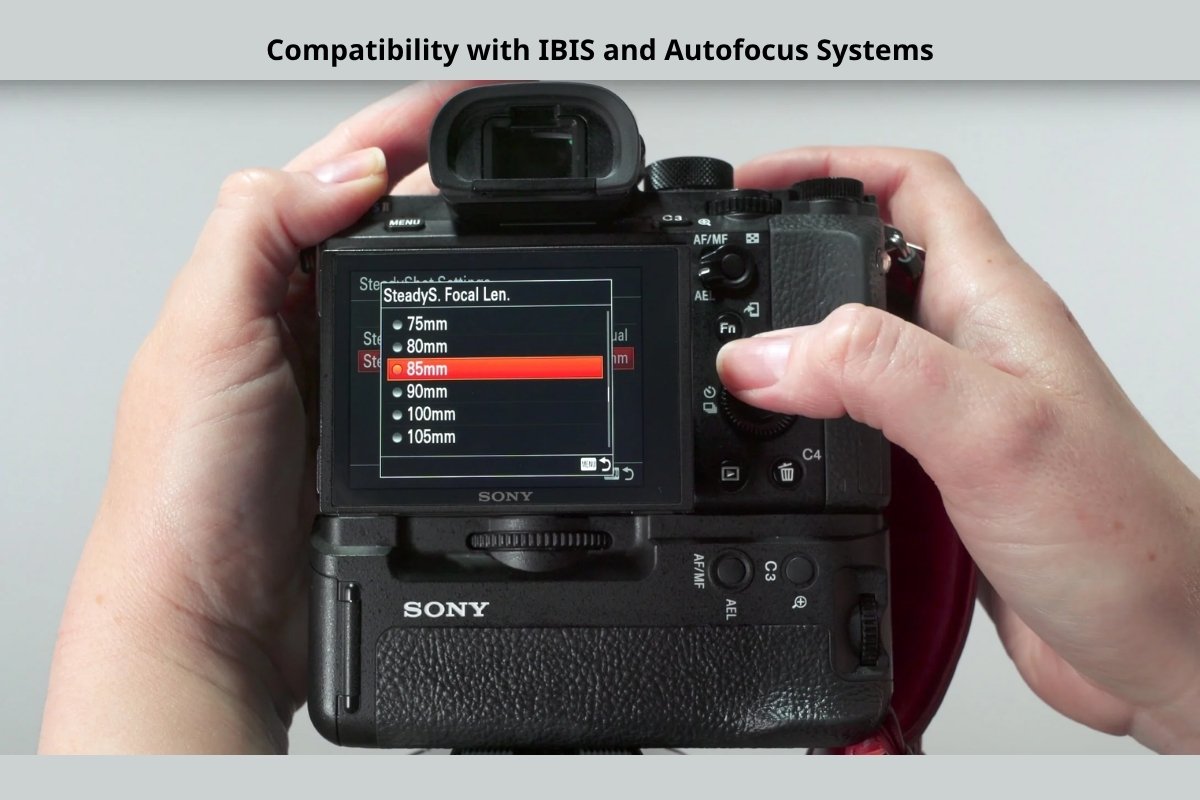
Smooth performance comes from how well your lens integrates with your camera body.
- Image stabilization synergy: Lenses optimized for in-body image stabilization (IBIS) allow handheld shooting without blur.
- Fast, silent autofocus: Essential for video walkthroughs and quick interior adjustments without noise interruption.
- Cross-brand efficiency: Ensure compatibility between Panasonic and Olympus systems for maximum performance.
Tips for Shooting Real Estate with Micro 4/3 Lenses
Having the right lens is only half of real estate photography success—the other half comes from technique. Micro Four Thirds (MFT) cameras and lenses can deliver extraordinary results, but to bring out their full potential, you need to apply consistent, professional shooting methods. The following techniques will help you produce clean, sharp, and visually balanced property photos every time.
Use a Tripod for Consistency and Stability

Even though most MFT cameras have excellent image stabilization, a sturdy tripod remains essential in real estate photography.
- Keep vertical lines straight: Architectural shots demand precision. A tripod helps maintain perfect alignment, preventing tilted walls or ceilings.
- Eliminate motion blur: Especially useful when shooting in low-light conditions or using slower shutter speeds for HDR.
- Maintain consistent framing: When capturing multiple exposures or panoramas, a fixed tripod position ensures seamless blending during post-processing.
Bracket Exposures for HDR Results
Dynamic range is a major challenge in real estate interiors—bright windows and dark corners often appear in the same frame.
- Capture multiple exposures: Take three to five shots at varying exposures (e.g., -2, 0, +2 EV).
- Blend for balance: Combine them during editing to achieve a realistic image that reveals detail in both highlights and shadows.
- Avoid overdone HDR: Keep the result natural, bright, and true to the scene.
Shoot at f/7.1–f/9 for Maximum Sharpness
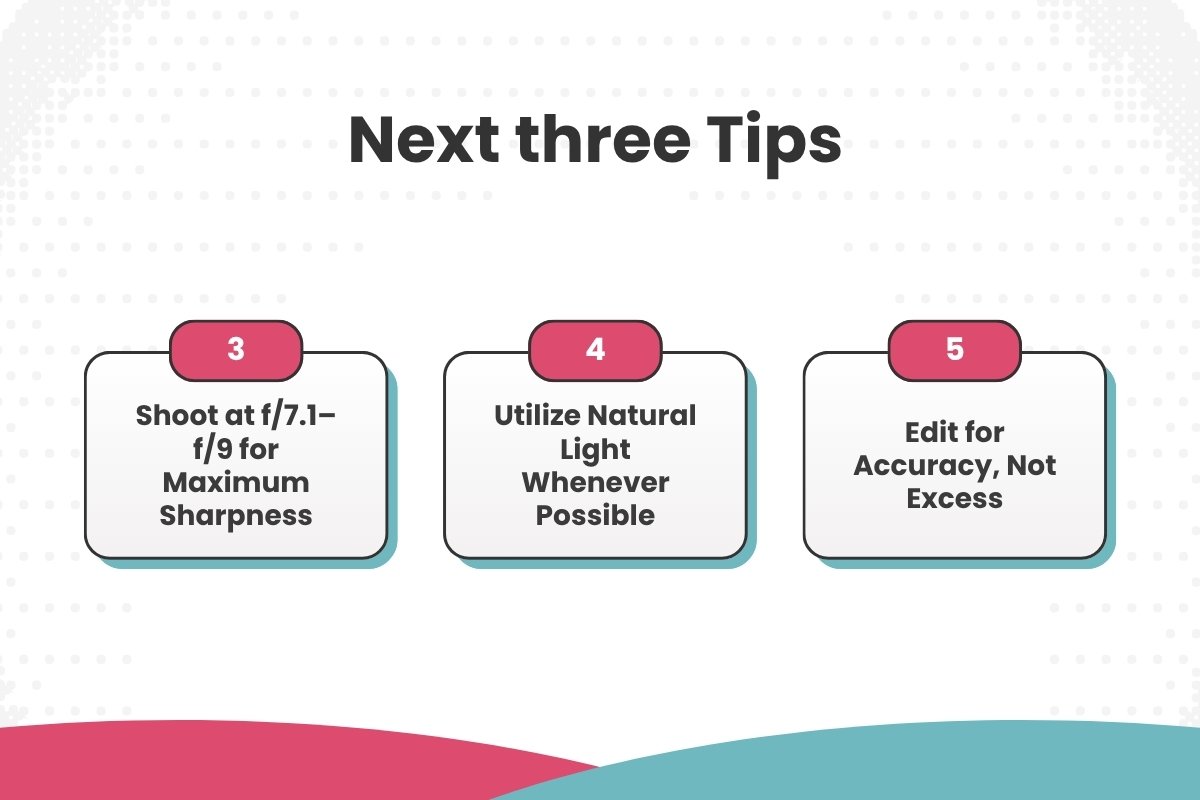
The Micro Four Thirds system excels when used with balanced aperture settings.
- Optimal depth of field: These mid-range apertures ensure sharpness across the frame, keeping furniture and architectural lines in focus.
- Avoid diffraction: Going above f/11 may cause a slight loss of detail due to sensor size limitations.
- Perfect for wide interiors: Ideal for capturing large rooms and open layouts with consistent clarity.
Utilize Natural Light Whenever Possible
Lighting defines the mood and realism of your photos. The best results often come from natural light rather than relying solely on artificial sources.
- Open blinds and curtains: Let daylight fill the space to create an inviting, balanced tone.
- Turn off mixed lighting: Avoid combining different color temperatures (e.g., daylight + tungsten) to prevent unnatural color casts.
- Shoot at the right time: Mid-morning and late afternoon offer soft, flattering light for both interiors and exteriors.
Edit for Accuracy, Not Excess
Post-processing should enhance, not distort, your images. The goal is to represent the property authentically.
- Correct white balance: Ensure colors look natural and consistent across rooms.
- Straighten and crop: Fix perspective issues or lens distortions common in wide-angle shots.
- Preserve realism: Avoid over-saturation or heavy filters that make the space appear unrealistic.
Recommended Workflow with Picpee
To elevate your real estate photos from great to stunning, editing is key—and that’s where Picpee comes in.
Picpee is an advanced online editing platform trusted by professional photographers and real estate agencies worldwide. It enhances clarity, fixes lighting, balances color tones, and removes lens distortions without over-processing.
Why Use Picpee:
- Fast, professional-grade real estate photo editing
- Corrects perspective distortion and exposure
- Customizable HDR and twilight enhancements
- Affordable, quick turnaround for bulk images
If you want your Micro Four Thirds shots to reach their full potential, Picpee ensures your final images look polished, natural, and ready for listing presentation.
Conclusion
Micro Four Thirds lenses prove you don’t need a bulky full-frame camera for professional real estate photography. They offer portability, precision, and excellent image quality, making them ideal for interiors, exteriors, and architectural details. Compact and lightweight, they are perfect for handheld shooting in tight spaces. With wide focal ranges and fast apertures, these lenses deliver sharp, vibrant, and low-distortion images. Popular options from Olympus and Panasonic Lumix make capturing stunning property photos efficient and versatile for photographers and agents alike.
 Single Exposure
Single Exposure Room Cleaning
Room Cleaning Reels
Reels Blended Brackets (HDR)
Blended Brackets (HDR) Changing Seasons
Changing Seasons Slideshows
Slideshows Flambient
Flambient Water in Pool
Water in Pool Individual
Individual 360° Image Enhancement
360° Image Enhancement Lawn Replacement
Lawn Replacement Team
Team Virtual Staging
Virtual Staging Rain to Shine
Rain to Shine Add Person
Add Person Remodel
Remodel Custom 2D
Custom 2D Remove Person
Remove Person 360° Image
360° Image Custom 3D
Custom 3D Background Replacement
Background Replacement Day to Dusk
Day to Dusk Property Video
Property Video Cut Outs
Cut Outs Day to Twilight
Day to Twilight Walkthrough Video
Walkthrough Video Change color
Change color 1–4 Items
1–4 Items
